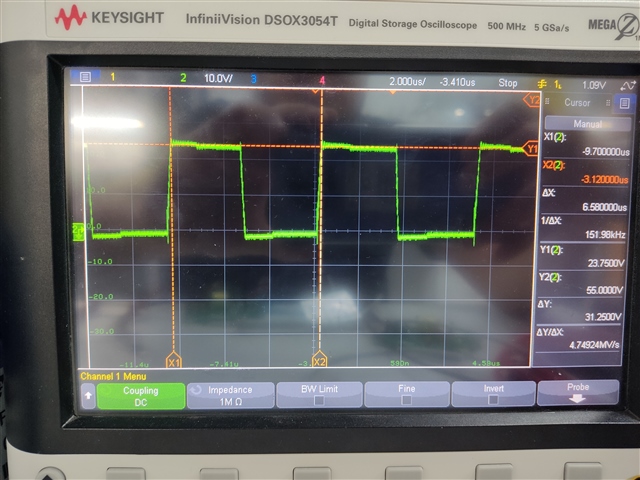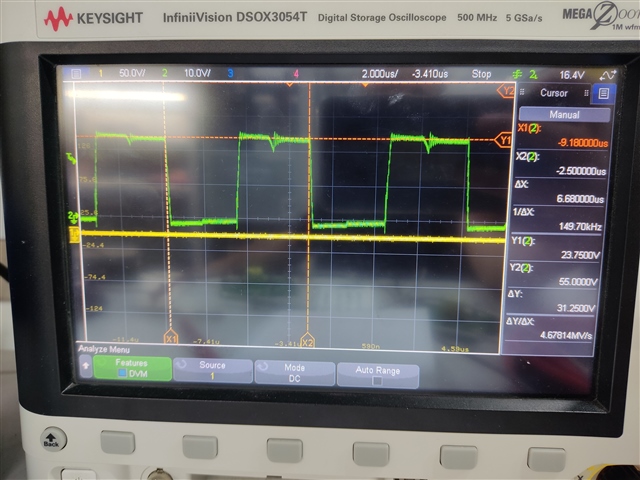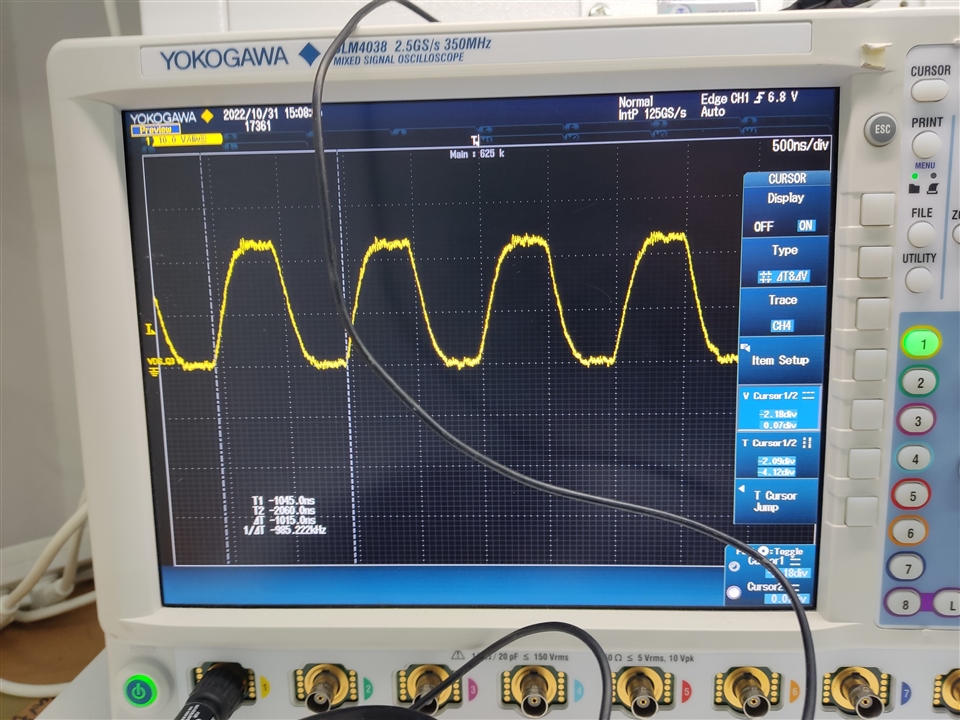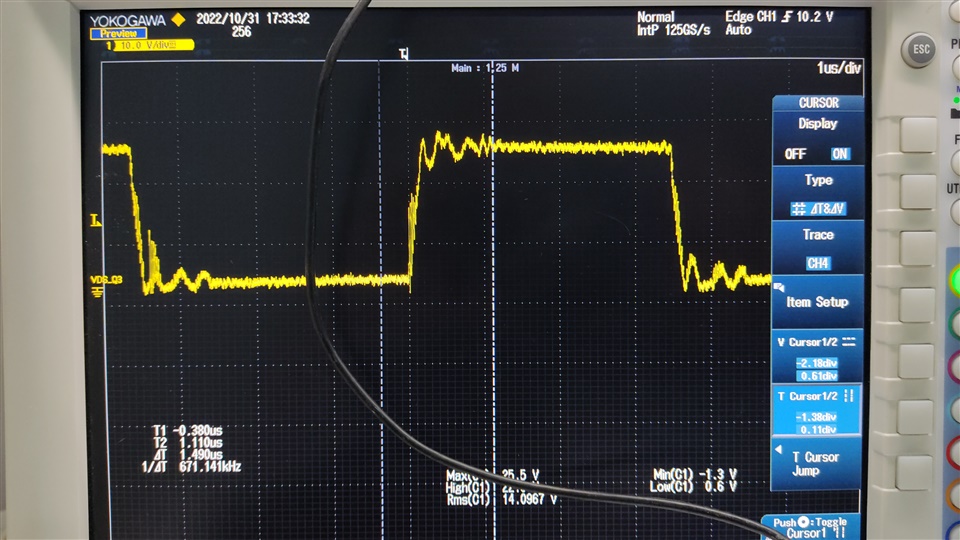Other Parts Discussed in Thread: SN6507
Hello,
I am using the SN6507 EVB of the push pull converter.
Circuit parameters:
1. frequency is 150kHz (Rclk=82kohm)
2. ILIM resistor is 18k (1.3A)
3. Input voltage is 12V
4. Output voltage range: 50-60V, 0.4W max
5. Custom Transformer parameters: Turn ratio N=7, primary inductance and resistance (from SW1 to VCC and from SW2 to VCC) is 80uH and 5ohm, primary leakage inductance is 60nH.
6. I am using inductor at the output to get the output voltage as a function of the duty cycle
To get 50V at the output i need to set the duty cycle to 30%: Vout=Vin*N*2*D
but i started at first with 48% duty cycle
I measured the drain voltage with a probe and this is what i get: 48% duty cycle and 82V at the output - making sense so far

Than I decreased the duty cycle to 30%
so, from the formula in the datasheet i need to select RDC as 242kohm.
This is what i get: still 48% duty cycle and 82V at the output

Than i decreased the duty cycle to 20% to see the impact of the drain voltage
so, from the formula in the datasheet i need to select RDC as 160kohm.
This is what I get: still 48% duty cycle, 82V at the output and the drain wave changed a bit

Than I replaced the transformer with the transformer of the EVB (750319696)
The Turn ration is 1/1.29, primary inductance: 150uH, primary resistance: 10ohm
This this what I get: 24V at the output instead of 3.7V (from the formula Vout=Vin*N*2*D) and duty cycle unknown

Than I removed the transformer and soldered 60ohm resistor between SW1 to VCC and this is what I get: 20% duty cycle, making sense

Do you know what could be the problem?
Thank you






